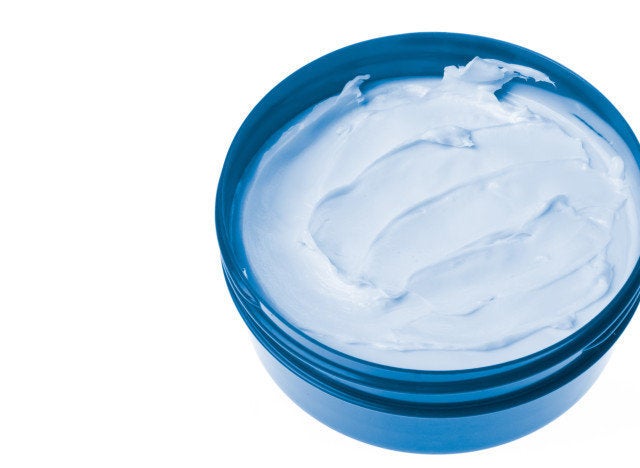
Skincare can be one of the most confusing things in life. While a Google search may tell you it's OK to embrace essential oils, your friends could simultaneously warn you that you're doing it all wrong, and then you go down this skin disaster spiral. Alright, so it's probably not that serious, but finding the right way to moisturize your face can be a battle.
While we're sitting here in the cold depths of the polar vortex, we've been thinking hard about the best way to protect our precious faces in the event of harsh winds. So we asked two dermatologists to weigh in on the proper ways to hydrate our skin. From knowing your skin type to reading between the ingredient lines, here's what you need to know about moisturizing your face.
You should be using a moisturizer based on your skin type.
One of the first mistakes people make when using products on their skin is using a product that doesn't necessarily fit their skin type. “Most patients will say they have sensitive skin,” says Dr. Paul Jarrod Frank, a New York City-based cosmetic dermatologist. But, if you are unsure, determining your type is easy. Dr. Frank suggests examining how your skin feels at the end of the day. Look to see if your T-zone is dry, oily or somewhat normal.
“Those suffering from dry skin problems are prone to having slightly allergic skin, and such people shouldn’t use conventional moisturizers because of the harm chemicals can have on the fragile surface. While using an oil-based moisturizing cream is terrible for acne-prone skin,” says board-certified dermatologist Dr. Ted Lain. So to avoid a skincare blunder, follow these guidelines:
Oily: “Look for lotions instead of creams,” advises Dr. Lain. Find formulas that have exfoliating ingredients, such as lactic glycolic and salicylic acids.
Dry: Definitely find a cream, especially in the winter weather. “There is more oil in a cream, therefore it is a thicker substance and more moisturizing. The greater the oil content, the better absorption through the skin barriers to hydrate the tissue,” says Dr. Frank.
Combination: While Dr. Lain believes this is the hardest skin type to find products for, he recommends “lotions with no acids, something bland such as Cetaphil, Cerave, Aveeno, Neutrogena, or Lubriderm.”
Normal: “I always tell people with normal skin to put a very thin layer of ointment on at night, such as Aquaphor,” says Dr. Frank, adding that this will help protect you against the forces of nature.
But don't forget, your surrounding climate impacts your skin, too.
Whether it’s hot, dry or windy, you should take the climate into account the next time you pick up some moisturizer. For those of you in the chilly, polar vortex parts of the country (who are not acne prone!), try an ointment. “A moisturizer gets readily absorbed, but an ointment leaves an extra layer of protection,” explains Dr. Frank. He also suggests not exfoliating.
If it's humid, Dr. Lain recommends "swapping your lightweight moisturizer for a gel, which is more hydrating,” because “a gel formulation won't make you look too oily if you start to break a sweat.” And finally, for those super dry places, Dr. Lain suggests a cream, but also adds that “using gentle soaps in the shower without exfoliants are helpful,” while “a cold humidifier in your bedroom at night can help your skin retain the moisture.”
And what about SPF?
Dr. Frank gives us the goods on what those SPF numbers really mean. “There are two types of damaging sun rays: UVA, which are responsible for aging the skin; and UVB, which are responsible for burning it -- the SPF number on a bottle of sunscreen only gives a guide for how much UVB protection the product offers.” The only way you'll really know if your sunscreen combats UVA rays is if it states so on the bottle.
Another myth, Dr. Frank explains, is that you don't have to use a different moisturizer from your sunscreen. ”Sunscreens already add moisture to your skin because of their ingredients and if you have oily skin, you may want to skip the separate moisturizer.” If you have to put both on, apply SPF first and let it settle before you put on your lotion or cream.
When testing a new moisturizer, be cautious.
We all have those moments when we buy some new skincare product and want to rub it all over our bodies. However, that could lead to unwanted breakouts and some horror-inducing rashes. “If you're trying out a new moisturizer, test it on your forearm first,” says Dr. Frank. And with that, Dr. Lain recommends that you “give it two weeks before you decide.”
One more important thing to consider is how the moisturizers are marketed. “Even if a product's label says that it is hypoallergenic, it still might contain something to which you're allergic,” says Dr. Frank. Make sure to read the ingredients before you buy, to avoid waste and misuse.
Finally, is it really better to moisturize while your face is still wet?
While Dr. Lain says it doesn't matter, Dr. Frank says the best time to really apply is after toning, “as your skin is primed to receive the maximum benefits.”
So there you have it, the basics of moisturizing your skin. If you ever find that your face is more irritated than usual, you should consult a doctor.
More winter skin solutions:
Want more HuffPost Style beauty content? Check us out on Twitter, Facebook, Tumblr, Pinterest and Instagram. (For everything else check out our main HuffPost Style Twitter, Tumblr, Pinterest and Instagram @HuffPostStyle.)
---
Do you have a beauty story idea or tip? Email us at beautytips@huffingtonpost.com. (PR pitches sent to this address will be ignored.)
